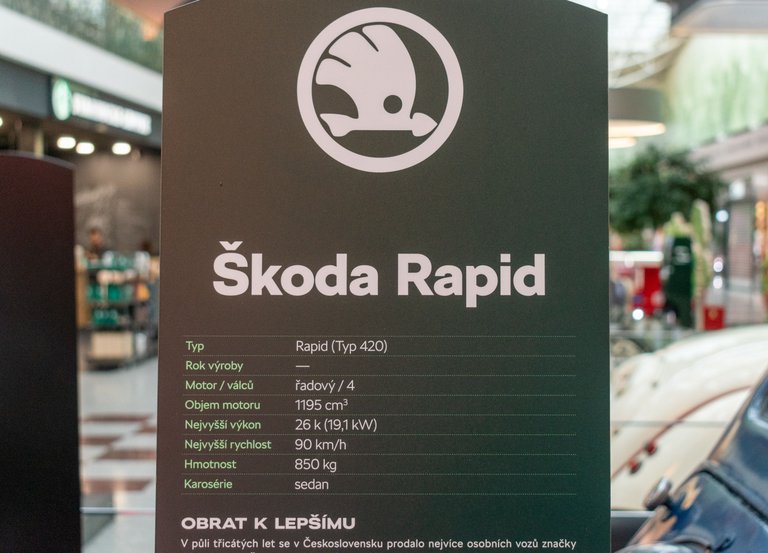Today, we're going to leave the Laurin and Klement brand we've previewed in the previous two posts and take a look at its successor. In 1925, Laurin and Klement merged with the Škoda company from Pilsen. Production in Mladá Boleslav was retained, but after one or two transitional models bearing both names, it continued under the Škoda brand with the winged arrow in the emblem.




Mass production was expanded and emphasis was also placed on cars that would be accessible to a wider population. An example is the type you can see in the following photos of the Skoda Rapid



At the same time, however, sports cars and cars for higher income groups were also produced. Skoda had a very wide range in terms of the variety of vehicle types




For example, the Skoda Superb was already a car for the wealthy. Not everyone could afford to buy one.




Škoda Tudor
During the Second World War, Škoda switched to military production.
Then came the communist coup in 1948, all companies and factories were nationalized. The first cars still copied the spirit of the pre-war Škoda factories, such as the
Škoda Tudor




Po roce 1948 se už výroba Škodovek zcela přizpůsobila požadavku co největšího počtu vyrobených aut za pokud možno co nejnižší cenu. Vnitřní vybavení bylo poměrně chudobné a bylv těchto autek nedostatek místa pro pasažéry i řidiče. Jeden typ se ale vymykal průměru. Byl vyjímečný
Byla to Škoda Felicia
After 1948, the production of Skoda cars was completely adapted to the requirement of the highest possible number of cars produced at the lowest possible price. The interior equipment was rather poor and there was a lack of space for passengers and drivers in these cars. One type, however, was out of the ordinary. It was exceptional
It was the Skoda Felicia




Other types were quite ordinary and uninteresting, Škoda Oktavia, Škoda 1000 MB. Such folk cars.
They were followed by the Škoda 100/110, then the Škoda 105/120/135. Some of them are still running on our roads.








Finally, something from today. Today Škoda Mlada Moleslav is making beautiful cars again







Tak to jsme se dnes trochu podívali na historii české automobolivé značky Škoda.
Doufám že se příspěvek bude líbit a těším se na Vaše reakce
Přeloženo pomocí DeepL Translate
So today we took a little look at the history of the Czech automotive brand Škoda.
I hope you enjoy the post and I look forward to your reactions
Translated by DeepL Translate
Great post with great shots, old cars/Škoda are beautiful
Thanks
Loved every car and the whole brand history. We used to have Skoda in Cuba, although is not common to see one nowadays.
In Cuba, mainly American cars from the sixties remained, Skoda cars were not as durable and long lasting as these cars. Then the 105/120/125 and the Favorites were subject to a lot of body corrosion. They weren't cars that lasted very long. In fact, the current ones are subject to corrosion. The sheet metal is too thin